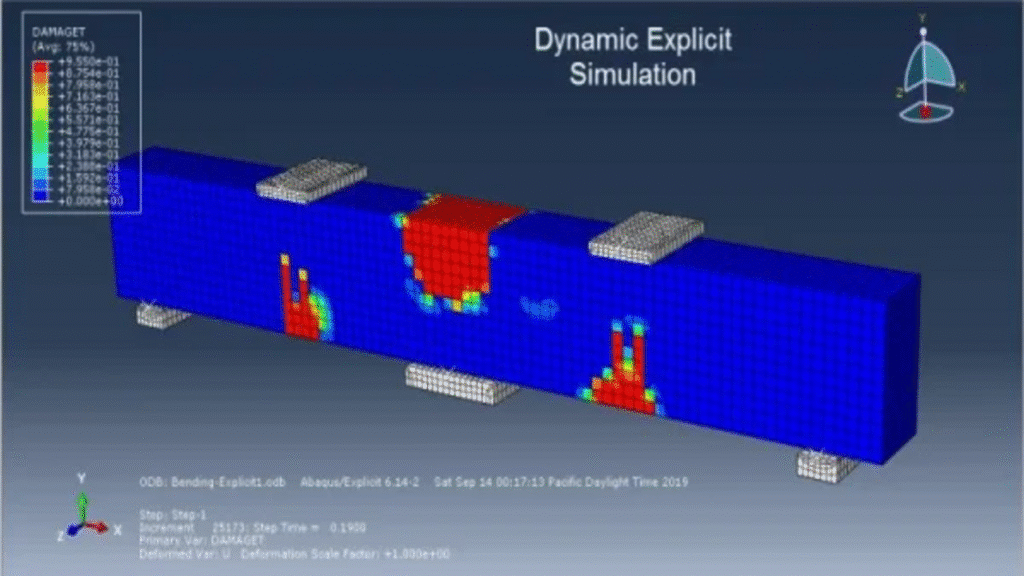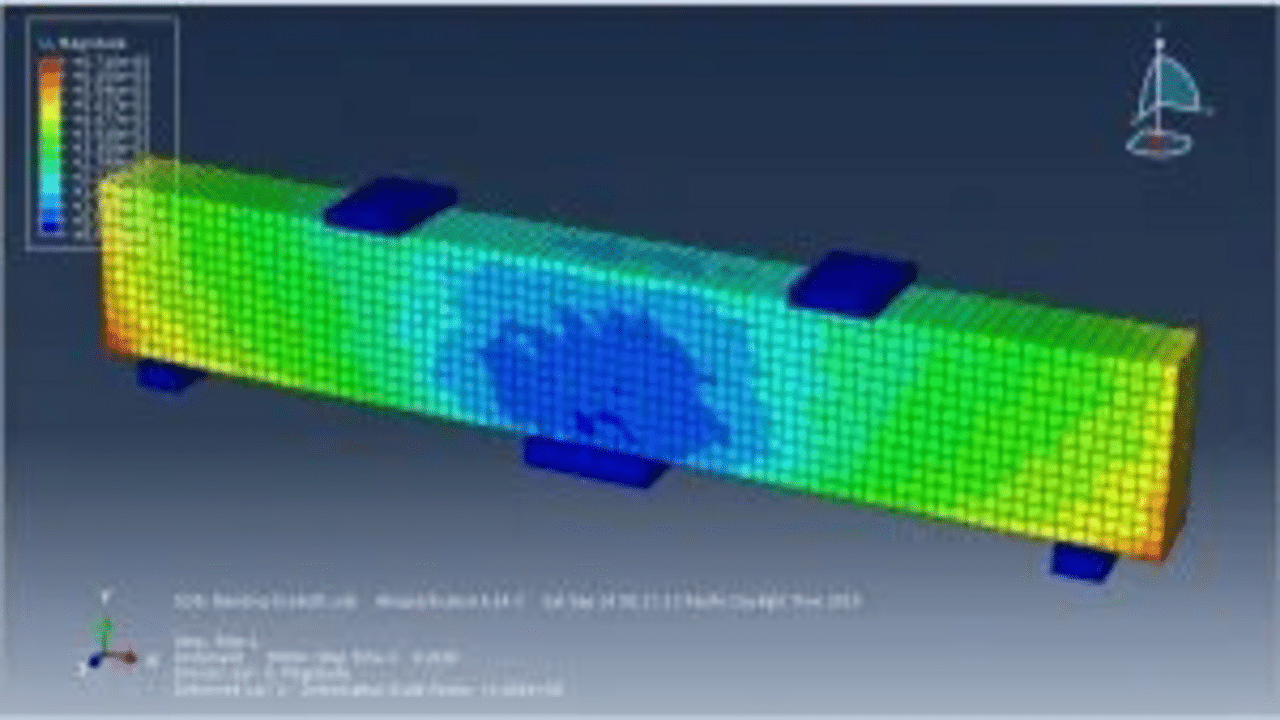




Product Overview:
This tutorial focuses on the simulation of a concrete beam subjected to both static and dynamic bending using Abaqus. The concrete beam is modeled as a three-dimensional solid part, complemented by five rigid components serving as force application and support bodies.
To accurately represent the behavior of concrete under both static and dynamic loading conditions, the Concrete Damaged Plasticity (CDP) model is employed. This model is founded on the concept of scalar (isotropic) damage, making it suitable for scenarios where concrete experiences various loading conditions, including cyclic loads. The CDP model accounts for the deterioration of elastic stiffness resulting from plastic deformations in both tension and compression, while also considering potential stiffness recovery during cyclic loading. It is noteworthy that the CDP model is specifically designed for concrete and is applicable in both static and dynamic simulations.
In the initial case, a general static step is implemented to perform the static analysis. During the static procedure, convergence issues may arise due to the tensile and compressive damage in the concrete. To mitigate premature non-convergence, modifications are introduced within the step parameters. In the subsequent case, a dynamic explicit step is utilized for the dynamic bending analysis, which aids in smoothing out convergence issues thanks to its inherent explicit nature. Surface-to-surface contact properties are defined for all contact domains, while fixed boundary conditions are assigned to the three rigid supports at the bottom, with displacement applied to the top rigid bodies. It is essential to use a suitable mesh to ensure the reliability of results.
Upon completing both analyses, it was observed that the static simulation experienced non-convergence at a specific point due to tensile and compressive damage. Despite this issue, the maximum load capacity—as indicated by the force-displacement diagram—was still achieved. In contrast, the dynamic simulation successfully resolved convergence issues, resulting in complete analysis without interruptions. Both damage and stress results were accessible post-simulation. Interestingly, the force-displacement behavior from the dynamic simulation mirrored that of the static analysis up to the maximum force, after which a noticeable degradation and decline in force was observed.

Let’s Learn and Collaborate
Get VIP access to new content.
Sign up for weekly deals and news.
Engineering Downloads is a hub for learning,
collaboration, and sharing engineering models
and resources.
© 2025 Engineering Downloads. All rights reserved.

Want to receive push notifications for all major on-site activities?